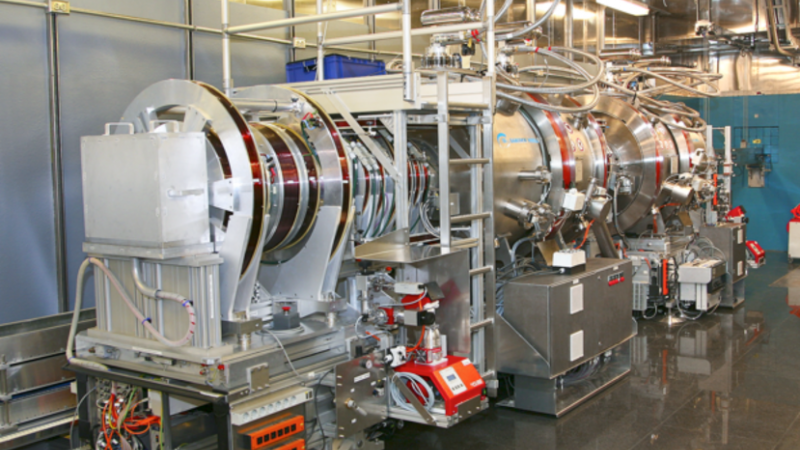Producing ever smaller, more energy-efficient devices demands the development of nanostructured materials with highly organized surfaces. Such materials have widespread potential applications, including more striking TV and computer screen displays, faster-working medicines, and tougher protective coatings in consumer products.
To better understand these subtle structures that deliver such big results, researchers used neutron scattering at Oak Ridge National Laboratory’s Spallation Neutron Source (SNS) to detect a hypothesized (but never previously observed) interphase (or transitional phase) between two polymer layers known to form on nanostructured surfaces. Understanding the properties of these polymer layers and how they interact with the newly observed interphase could help scientists and engineers refine a variety of industrial, consumer, and biological devices.
“Nanopores offer the ability to have an organized nanoscale structure you otherwise wouldn’t have,” said Margarita Krutyeva, a postdoctoral researcher in neutron scattering at the Jülich Centre for Neutron Science, which operates the Neutron Spin Echo Spectrometer (NSE) at SNS. Nanopores are tiny cylindrical holes perforating a substrate that range in size from about 1 to 100 nm (roughly 1,000 times smaller than a red blood cell). The pores are used to organize polymer chains into a desired structure by “threading” often tangled polymer chains into single chains that can attach to the inner surface of the pore. The range of possibilities in size, material, and spacing of nanopores can create many structures, each ideal for different materials applications. But there is still a lot to learn about how molecules interact inside the pores because they no longer move as they do in their natural state and must conform to a different structure.
Previous studies suggest that when polymer chains are squeezed into the cylindrical nanopore they separate into two main layers: (1) a “bulk” layer farther from the surface of the pore that resembles free-moving polymer chains and (2) a less mobile, “glassy” layer that is anchored to the surface of the nanopore. Essentially, the polymer chains slow down the closer they are to the surface of the pore, which affects—for better or worse—the properties of the nanomaterial.
Because of experimental challenges in seeing polymers inside pores, microscopic studies on the chain level are primarily done through simulations, and only a few observational experiments have explored chain dynamics under confinement. “No one could observe an interphase microscopically,” Krutyeva said, particularly the single-chain dynamics of a polymer melt in nanopores. After filling anodic aluminum oxide nanopores with the polymer sample polydimethylsiloxane (widely used in medicine and cosmetics), Krutyeva’s research team searched for the interphase on the NSE spectrometer—an instrument that offers the ultrahigh resolution needed to observe the slow motions of polymers on the scale of single macromolecules.
The scattering results supported prior studies that claimed packing the polymers into the narrow nanopore caused dissociation, resulting in the mobile, bulk phase and the anchored, glassy phase.
Significantly, the results also provided the first direct observation of the interphase, which did not actually touch the nanopore surface (distinguishing it from the glassy layer) but was confined by chains anchored to the surface. Finally, the results suggest the interphase is more mobile than speculated, which carries implications for how confined polymers might be manipulated when engineering nanomaterials.
“We saw an interphase that was quite large at four nanometers,” Krutyeva said. “This means the physical properties of the polymer that was introduced gradually changed as a function of the distance from the pore wall.”
Krutyeva said this is just the beginning of her work now that she has found the interphase. Because the properties of the interphase could change depending on the type of polymer used, surface chemistry, the size of the nanopore, and several other factors, she plans to study a range of polymer dynamics under confinement in upcoming research.—Katie Elyce Freeman
Published Work
M. Krutyeva, A. Wischnewski, M. Monkenbusch, L. Willner, J. Maiz, C. Mijangos, A. Arbe, J. Colmenero, A. Radulescu, O. Holderer, M. Ohl, and D. Richter, “Effect of nanoconfinement on polymer dynamics: Surface layers and interphases,” Phys Rev Lett 110(10), 108303 (2013). DOI:10.1103/PhysRevLett.110.108303.






